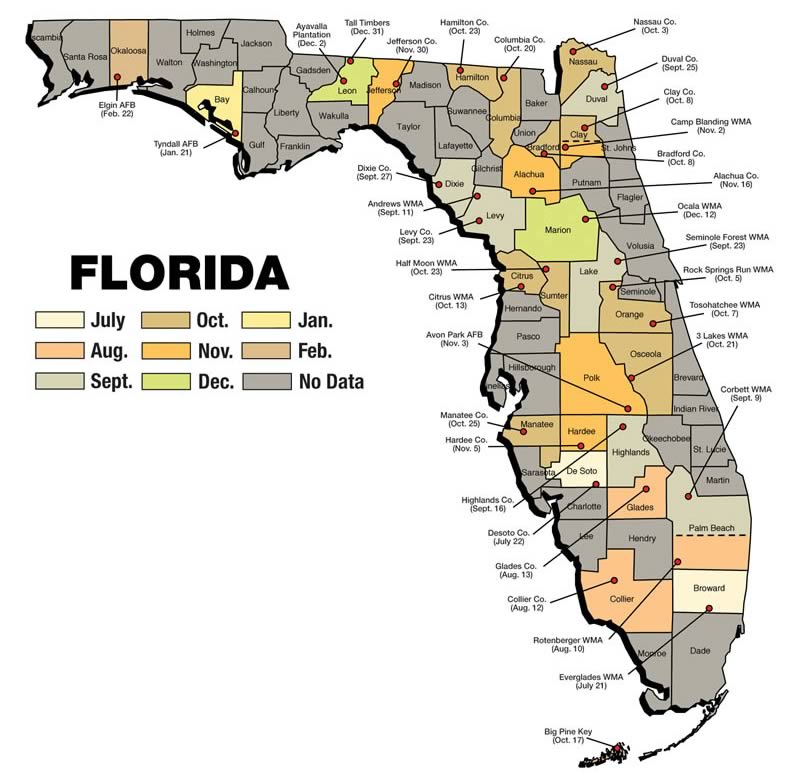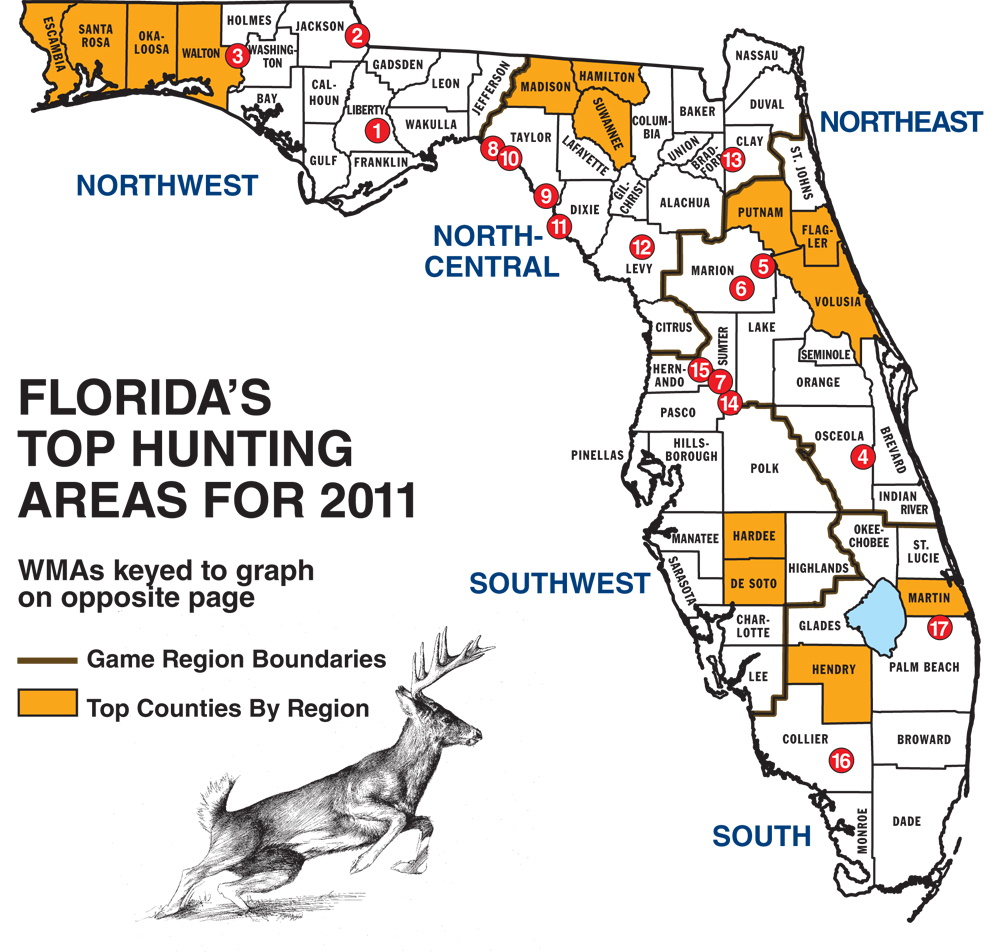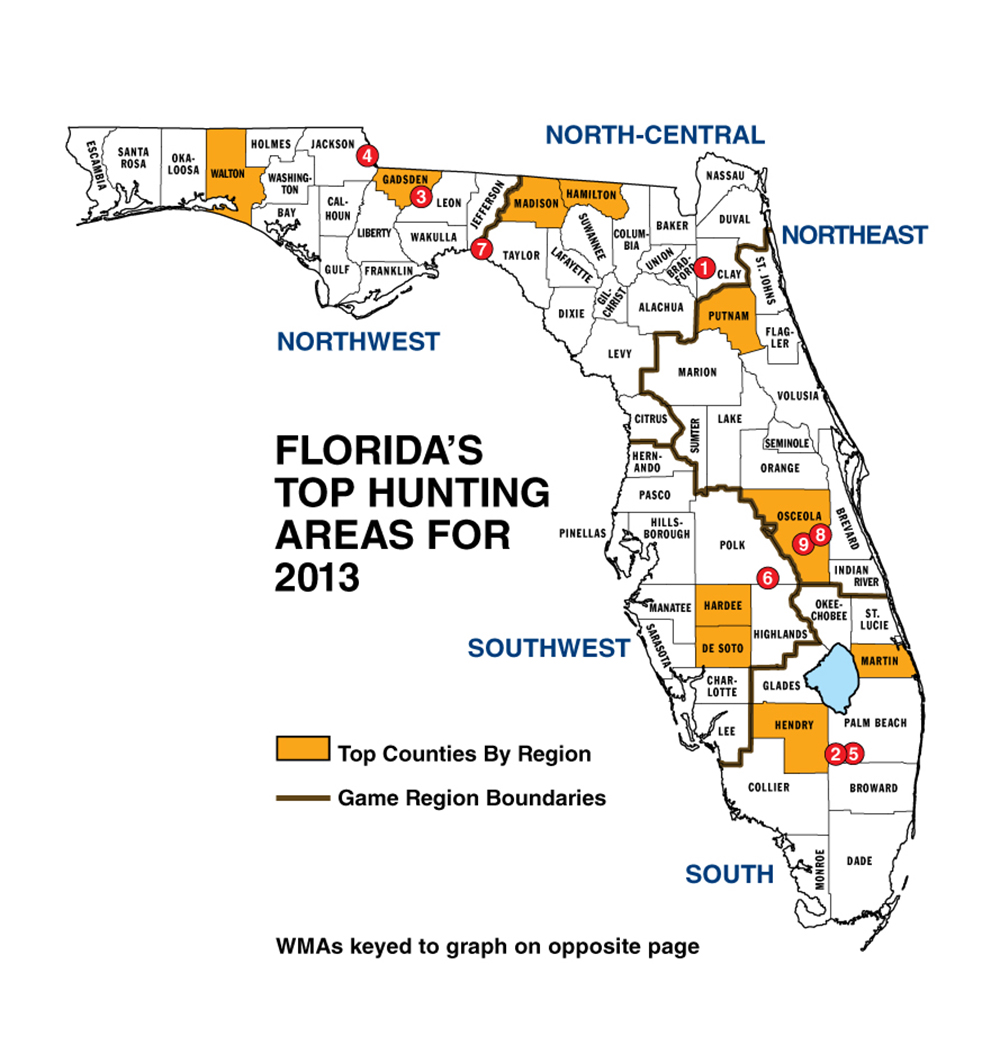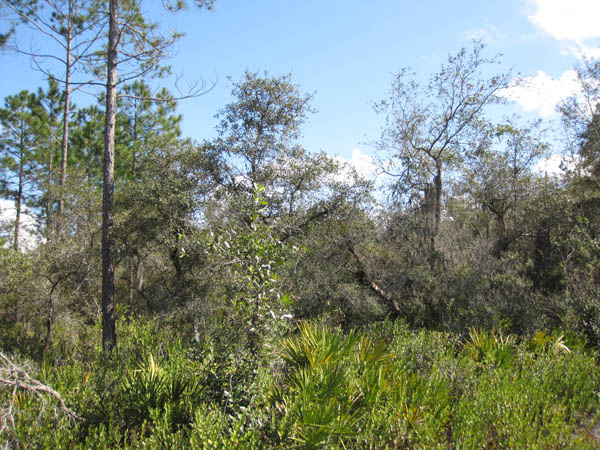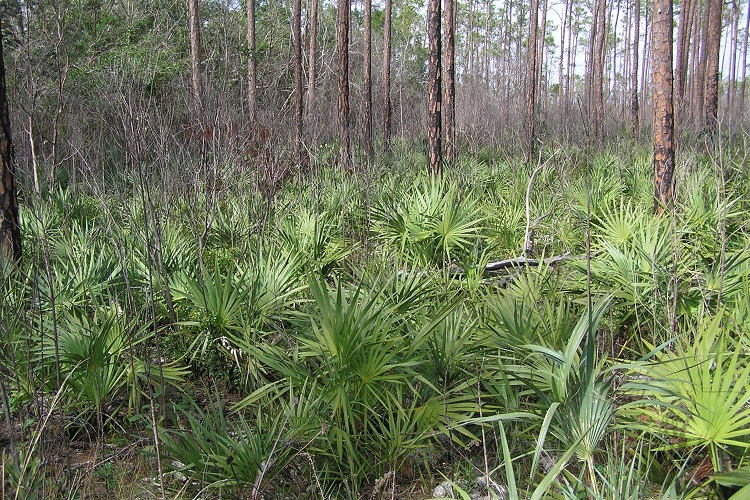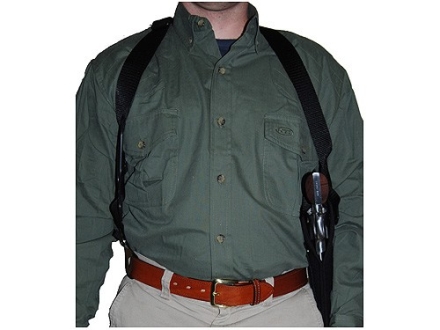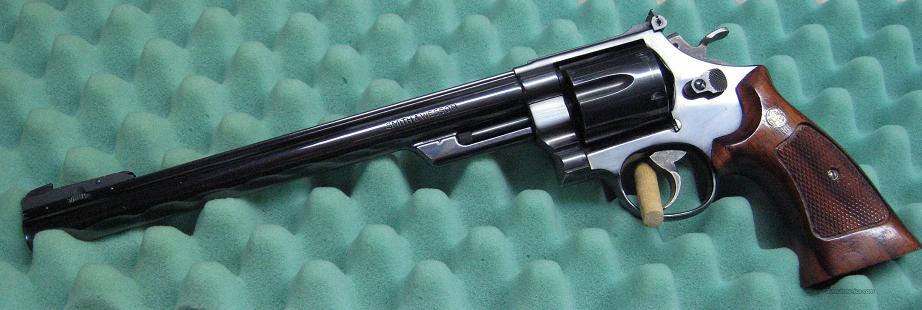back a few years ago here in florida they allowed access for the first time in years to a rather remote and hard to get into management area, it was reasonably close to where we lived so we put into a lottery for permits and to the amazement of both one of my friends (Jack) and myself we actually drew permits for the area.
now the area was mostly palmetto scrub and jack pine interlaced with groves of oak and myrtle with occasional swampy clearings so hunting it almost required a rifle/carbine rather than the shot guns loaded with slugs or rarely buckshot , that many of my friends commonly used for deer and hog hunts where the brush tended to be thicker and ranges on shots of over 30-50 yards were rather rare, because the ranges could and occasionally did extend out to 150 yards..
having walked thru the area a few times we knew it was loaded with deer and hogs but we also knew we could easily spend hours walking deer trails in Florida,s hot sun, and that we might get shots out to 80-120 yards, or a bit more on rare occasions, so that more or less indicated a carbine, with its lighter weight and longer range would be about the best choice, that was both easy to carry without becoming overly tired and something with the range and power to handle 120 yard or a bit longer shots.
Jack who was my hunting partner at the time was a designated sniper on the local police swat response team, so he selected a 308 win caliber Remington carbine and I selected my marlin 44 mag lever action carbine.
now if your familiar with firearms you know that a 308 win caliber carbine packs considerably more punch than a 44 mag carbine... at least on paper.
Jack had loaded up some 165 grain ammo, loaded to about 2700fps from his 20" carbine (fairly hot loads) , Id loaded the same 300 grain hard cast bullets that left my carbine at about 1400 fps .
for anyone who,s not familiar a CARBINE is generally a smaller lighter, version of a typical RIFLE with a shorter barrel (generally 16.5-20" long for a carbine, and 22"-26" or longer for a rifle barrel, and carbines are generally a pound or so lighter in weight )and commonly chambered in a fairly light recoil level cartridge ,because of the carbines lighter weight and shorter barrel , which makes the recoil and muzzle flash of the bigger calibers less pleasant to shoot, from the smaller firearm.....although there,s plenty of exceptions to that caliber rule
common carbines are your typical 30/30 and 44 mag lever action rifles but there,s dozens of other configurations.
we spent weeks at the range sighting our carbines in perfectly, both carbines easily shot similar 1"-1.5" groups at 100 yards with the ammo we used. and having a few beers or coffee and discussing the up coming hunt was what we did for weeks prior to the hunt and the discussion between us always seem to drift around eventually to the big difference in the carbines and calibers.....JACK being a SWAT team member got to practice BOTH at work and on his off days with me at the range, while I was at the time limited to one morning every other weekend.
well eventually the big opening day arrived and Jack and I drove over to the area and checked in with the game and fish guys manning the area gates at about 5A.M. and after checking our permits where we were informed, that the area was (WALK IN ONLY) so we parked jacks truck, got our back packs and gear and started walking into the area along with a group of about 20 other guys, the dirt road we followed for about 2 miles constantly split off in random directions so after awhile jack and I found one we liked the look of and left the group, to explore the side road accessed area.. after it was about 7AM we found a well wooded area with a good deal of fresh game sign, so we decided we would both find a comfortable place to sit about 100 yards apart so we could let the area quite down and perhaps have some deer or hogs walk thru giving us a chance to fill our tags.
After about 4 hours Jack and I had seen little, and the mosquitoes were a real P.I.T.A. even with insect repellent which we hate to use because its odor is sure to alert any game down wind of your location, that your there.
Well as we were discussing the humor in putting yourself out in the swamp to feed a billion mosquitoes ,sweat so bad our camo was soaked and paying for the privilege to do so, while spending a good deal more cash on equipment,while operating under the absurd idea we were having fun...jack suddenly whispered, that he saw a couple deer moving our way, and jack having spotted them, he naturally got the first shot , so we both got into a kneeling or sitting position.
typical palmetto thickets where 20 -40 yard shots are the normal range, and where some areas where use of a climbing tree stand offer's you a big advantage
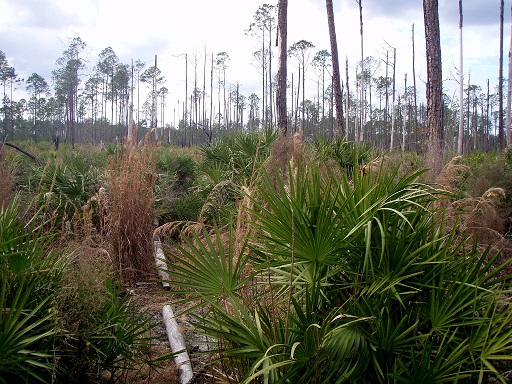

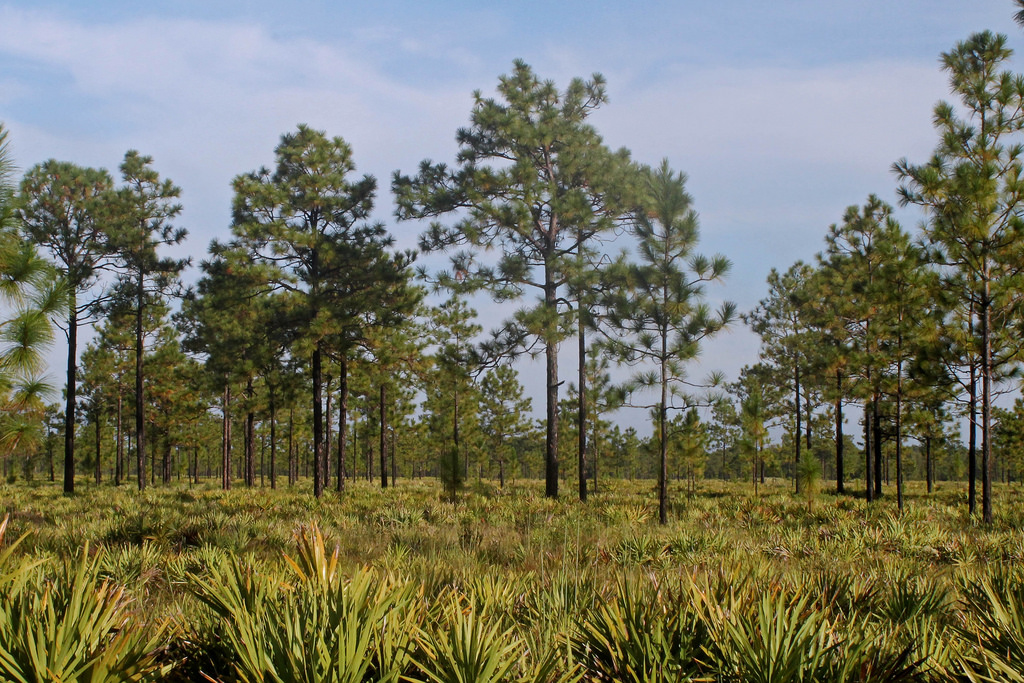
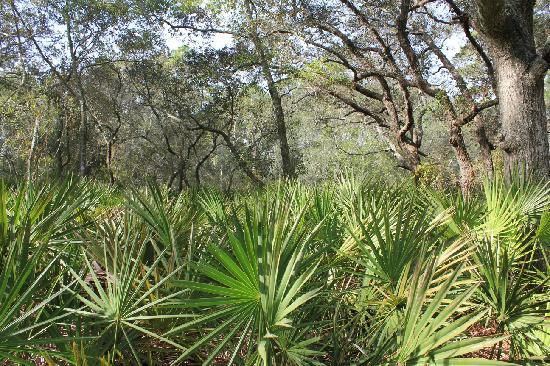
It took the small group of deer at least 40 minutes to feed slowly out into a small clearing. once jack was 100% sure of his choice and shot angle he whispered he would take the buck on the left side of the group, which was at about 80 yard out, and he suggested I take a very similar buck near the center of the group.
Ive shot a good deal more deer than JACK , has so I just nodded and decided that if Jack shot a deer we would have our hands quite full dragging or packing the deer back to the truck so I was not going to shoot a deer unless it was rather exceptional, which at that moment did not seem to be the case.
At jacks shot All the deer started running, Jack slapped off a second shot at his fast departing white flag, indicating his deer was exiting the area.
I just started laughing ......SWAT TEAM ..... HILARIOUS....308 win!!! I could hardly breath , I had tears running down my face looking at Jacks expression,I was laughing so hard.
We walked over and found a sparse blood trail, 80 yard further along we found jacks deer with the lower edge of his heart and a bit of lung punched with a neat 30 caliber hole in and out of the deers lower chest, Florida deer are small and jacks hit was at least 6" lower than he had planed the result was the bullet hardly had time to expand before it exited.
the good part was we found the deer and his one hit was quickly fatal and we wasted zero meat....well that and I got too verbally abuse jack, because the deer ran off showing zero indication it was hit!!
and what made it even better was that two weeks later Jack was watching when I got my deer, it dropped so fast he swore I missed it, but the heavy cast slug from my 44 carbine busted thru one shoulder and shattered the spine, instantly killing my deer.
id thought the distance was about 150 yards so I had placed the cross hairs on the scope to look like the horizontal line was on the deers upper back.
and the real grin was I hit that deer at really near 140 yards, so the bullet hit a bit higher than anticipated. .
while neither deer kill proves anything, about either carbines real effectiveness and only shows shot placement is critical, it was still damn entertaining, a good conversation topic for years and of course meat for several bar-b-ques .
yes Jacks a good shot, he regularly makes me look bad at the range, but he practices mostly off a bench rest or using a bi-pod while I spend most of my practice sitting or shooting off-hand.....there,s no bench rest in the hunt areas
308 win data
http://www.handloads.com/loaddata/?Cali ... type=Rifle
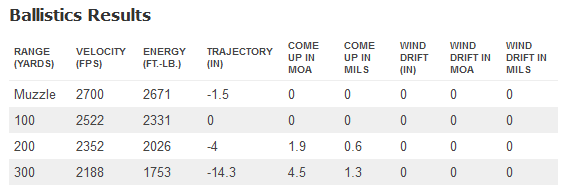
44 mag data
http://www.handloads.com/loaddata/defau ... pe=Handgun

now the area was mostly palmetto scrub and jack pine interlaced with groves of oak and myrtle with occasional swampy clearings so hunting it almost required a rifle/carbine rather than the shot guns loaded with slugs or rarely buckshot , that many of my friends commonly used for deer and hog hunts where the brush tended to be thicker and ranges on shots of over 30-50 yards were rather rare, because the ranges could and occasionally did extend out to 150 yards..
having walked thru the area a few times we knew it was loaded with deer and hogs but we also knew we could easily spend hours walking deer trails in Florida,s hot sun, and that we might get shots out to 80-120 yards, or a bit more on rare occasions, so that more or less indicated a carbine, with its lighter weight and longer range would be about the best choice, that was both easy to carry without becoming overly tired and something with the range and power to handle 120 yard or a bit longer shots.
Jack who was my hunting partner at the time was a designated sniper on the local police swat response team, so he selected a 308 win caliber Remington carbine and I selected my marlin 44 mag lever action carbine.
now if your familiar with firearms you know that a 308 win caliber carbine packs considerably more punch than a 44 mag carbine... at least on paper.
Jack had loaded up some 165 grain ammo, loaded to about 2700fps from his 20" carbine (fairly hot loads) , Id loaded the same 300 grain hard cast bullets that left my carbine at about 1400 fps .
for anyone who,s not familiar a CARBINE is generally a smaller lighter, version of a typical RIFLE with a shorter barrel (generally 16.5-20" long for a carbine, and 22"-26" or longer for a rifle barrel, and carbines are generally a pound or so lighter in weight )and commonly chambered in a fairly light recoil level cartridge ,because of the carbines lighter weight and shorter barrel , which makes the recoil and muzzle flash of the bigger calibers less pleasant to shoot, from the smaller firearm.....although there,s plenty of exceptions to that caliber rule
common carbines are your typical 30/30 and 44 mag lever action rifles but there,s dozens of other configurations.
we spent weeks at the range sighting our carbines in perfectly, both carbines easily shot similar 1"-1.5" groups at 100 yards with the ammo we used. and having a few beers or coffee and discussing the up coming hunt was what we did for weeks prior to the hunt and the discussion between us always seem to drift around eventually to the big difference in the carbines and calibers.....JACK being a SWAT team member got to practice BOTH at work and on his off days with me at the range, while I was at the time limited to one morning every other weekend.
well eventually the big opening day arrived and Jack and I drove over to the area and checked in with the game and fish guys manning the area gates at about 5A.M. and after checking our permits where we were informed, that the area was (WALK IN ONLY) so we parked jacks truck, got our back packs and gear and started walking into the area along with a group of about 20 other guys, the dirt road we followed for about 2 miles constantly split off in random directions so after awhile jack and I found one we liked the look of and left the group, to explore the side road accessed area.. after it was about 7AM we found a well wooded area with a good deal of fresh game sign, so we decided we would both find a comfortable place to sit about 100 yards apart so we could let the area quite down and perhaps have some deer or hogs walk thru giving us a chance to fill our tags.
After about 4 hours Jack and I had seen little, and the mosquitoes were a real P.I.T.A. even with insect repellent which we hate to use because its odor is sure to alert any game down wind of your location, that your there.
Well as we were discussing the humor in putting yourself out in the swamp to feed a billion mosquitoes ,sweat so bad our camo was soaked and paying for the privilege to do so, while spending a good deal more cash on equipment,while operating under the absurd idea we were having fun...jack suddenly whispered, that he saw a couple deer moving our way, and jack having spotted them, he naturally got the first shot , so we both got into a kneeling or sitting position.
typical palmetto thickets where 20 -40 yard shots are the normal range, and where some areas where use of a climbing tree stand offer's you a big advantage




It took the small group of deer at least 40 minutes to feed slowly out into a small clearing. once jack was 100% sure of his choice and shot angle he whispered he would take the buck on the left side of the group, which was at about 80 yard out, and he suggested I take a very similar buck near the center of the group.
Ive shot a good deal more deer than JACK , has so I just nodded and decided that if Jack shot a deer we would have our hands quite full dragging or packing the deer back to the truck so I was not going to shoot a deer unless it was rather exceptional, which at that moment did not seem to be the case.
At jacks shot All the deer started running, Jack slapped off a second shot at his fast departing white flag, indicating his deer was exiting the area.
I just started laughing ......SWAT TEAM ..... HILARIOUS....308 win!!! I could hardly breath , I had tears running down my face looking at Jacks expression,I was laughing so hard.
We walked over and found a sparse blood trail, 80 yard further along we found jacks deer with the lower edge of his heart and a bit of lung punched with a neat 30 caliber hole in and out of the deers lower chest, Florida deer are small and jacks hit was at least 6" lower than he had planed the result was the bullet hardly had time to expand before it exited.
the good part was we found the deer and his one hit was quickly fatal and we wasted zero meat....well that and I got too verbally abuse jack, because the deer ran off showing zero indication it was hit!!
and what made it even better was that two weeks later Jack was watching when I got my deer, it dropped so fast he swore I missed it, but the heavy cast slug from my 44 carbine busted thru one shoulder and shattered the spine, instantly killing my deer.
id thought the distance was about 150 yards so I had placed the cross hairs on the scope to look like the horizontal line was on the deers upper back.
and the real grin was I hit that deer at really near 140 yards, so the bullet hit a bit higher than anticipated. .
while neither deer kill proves anything, about either carbines real effectiveness and only shows shot placement is critical, it was still damn entertaining, a good conversation topic for years and of course meat for several bar-b-ques .
yes Jacks a good shot, he regularly makes me look bad at the range, but he practices mostly off a bench rest or using a bi-pod while I spend most of my practice sitting or shooting off-hand.....there,s no bench rest in the hunt areas
308 win data
http://www.handloads.com/loaddata/?Cali ... type=Rifle

44 mag data
http://www.handloads.com/loaddata/defau ... pe=Handgun

Last edited by a moderator:




